Creating a skincare routine doesn’t have to be complicated or time-consuming. A basic skincare routine can be both straightforward and highly effective, ensuring you maintain healthy, glowing skin with minimal effort.
In this guide, you’ll learn:
- How to Build a Simple and Effective Skincare Routine: Discover the essential steps to include in your daily regimen for optimal skin health.
- Morning vs. Evening Skincare Routine: Understand the key differences and why customizing your routine for day and night can enhance your skin’s appearance and well-being.
By following these tips, you’ll be able to streamline your skincare process and achieve great results effortlessly. Dive in to find out how you can make your skincare routine work for you!
Table of Contents
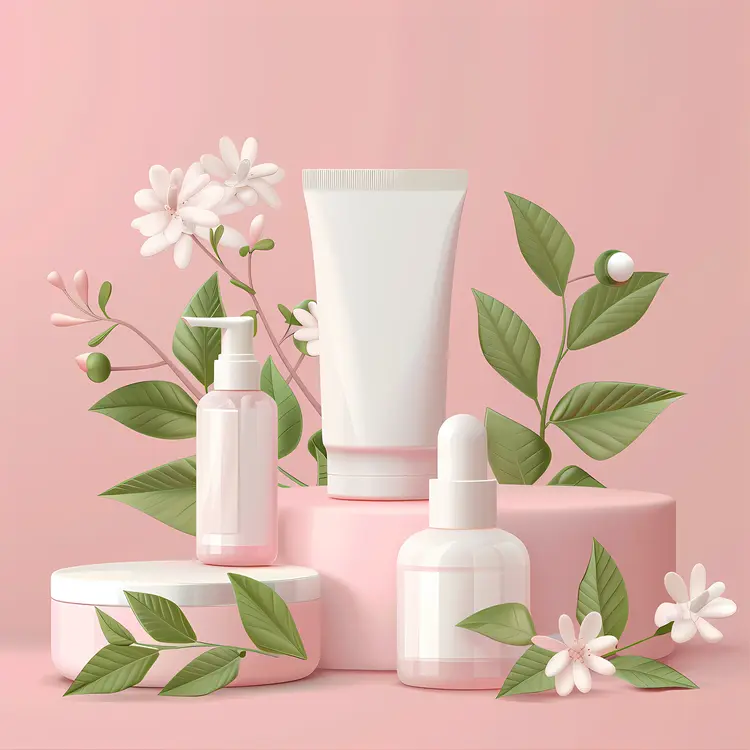
How to Create a Simple and Effective Skincare Routine
Building a simple and effective skincare routine is key to achieving and maintaining healthy, radiant skin. The goal is to streamline your regimen with essential steps and products that cater to your skin’s needs. Here’s a clear guide to setting up a basic yet impactful skincare routine:
1. Cleansing
What It Is: A gentle cleanser removes dirt, oil, and impurities from your skin.
Why It’s Important: Cleansing is crucial for preventing clogged pores and acne. It prepares your skin for the next steps in your routine.
How to Choose: opt for a cleanser that suits your skin type:
- Oily Skin: Gel or foaming cleansers.
- Dry Skin: Cream or hydrating cleansers.
- Sensitive Skin: Fragrance-free, mild cleansers.
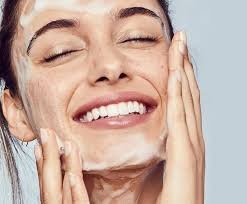
2. Toning
What It Is: A toner helps balance your skin’s pH and removes any remaining residues after cleansing.
Why It’s Important: Toning can tighten pores, reduce redness, and improve the effectiveness of subsequent products.
How to Choose: Select a toner based on your skin concerns:
- Oily/Acne-Prone Skin: Toners with salicylic acid.
- Dry Skin: Hydrating or soothing toners.
- Combination Skin: Balancing toners.

3. Moisturizing
What It Is: A moisturizer hydrates and locks in moisture, keeping your skin soft and smooth.
Why It’s Important: Moisturizing helps maintain skin hydration, which is crucial for a healthy skin barrier and overall skin health.
How to Choose: Pick a moisturizer that matches your skin type:
- Oily Skin: Lightweight, non-comedogenic moisturizers.
- Dry Skin: Rich, emollient creams.
- Sensitive Skin: Fragrance-free, soothing formulas.

4. Sunscreen
What It Is: Sunscreen protects your skin from harmful UV rays with a minimum SPF of 30.
Why It’s Important: Daily sunscreen application prevents sun damage, reduces the risk of premature aging, and protects against skin cancer.
How to Choose: Use broad-spectrum sunscreens that protect against both UVA and UVB rays:
- Oily Skin: Gel-based or mattifying sunscreens.
- Dry Skin: Moisturizing sunscreens with added hydrating ingredients.
- Sensitive Skin: Mineral-based sunscreens with fewer additives.
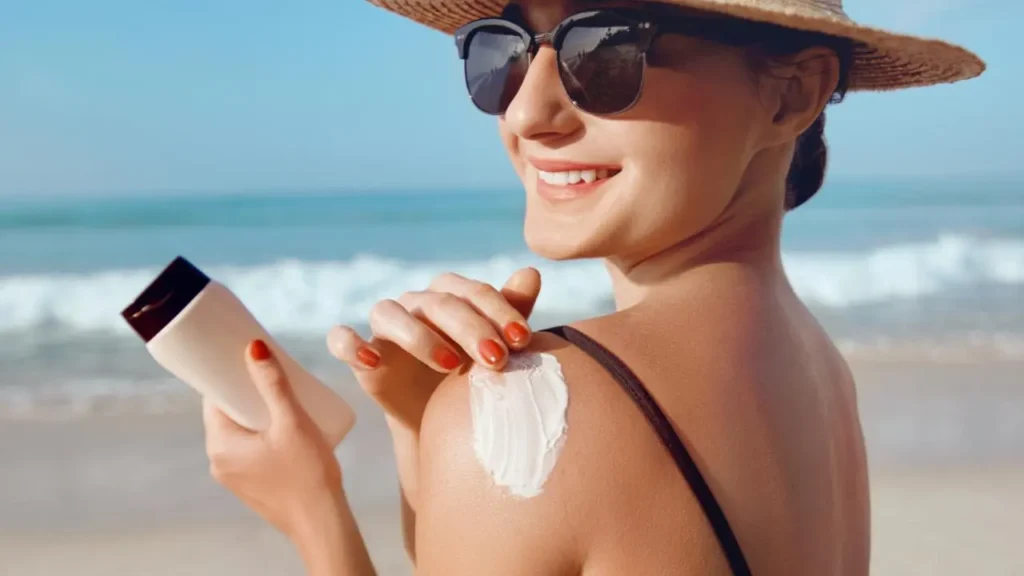
Morning vs. Evening Skincare Routine: What’s the Difference?
Understanding the difference between a morning and evening skincare routine is essential for optimizing your skincare regimen. Your skin has different needs at different times of the day, and tailoring your routine accordingly can help you achieve healthier, more radiant skin. Let’s break down the key steps and purposes of both routines.

Morning Skincare Routine: Start Your Day with Protection and Care
Your morning skincare routine is essential for preparing and protecting your skin for the day ahead. By focusing on cleansing, hydration, and sun protection, you can ensure that your skin remains healthy and resilient against daily environmental stressors.
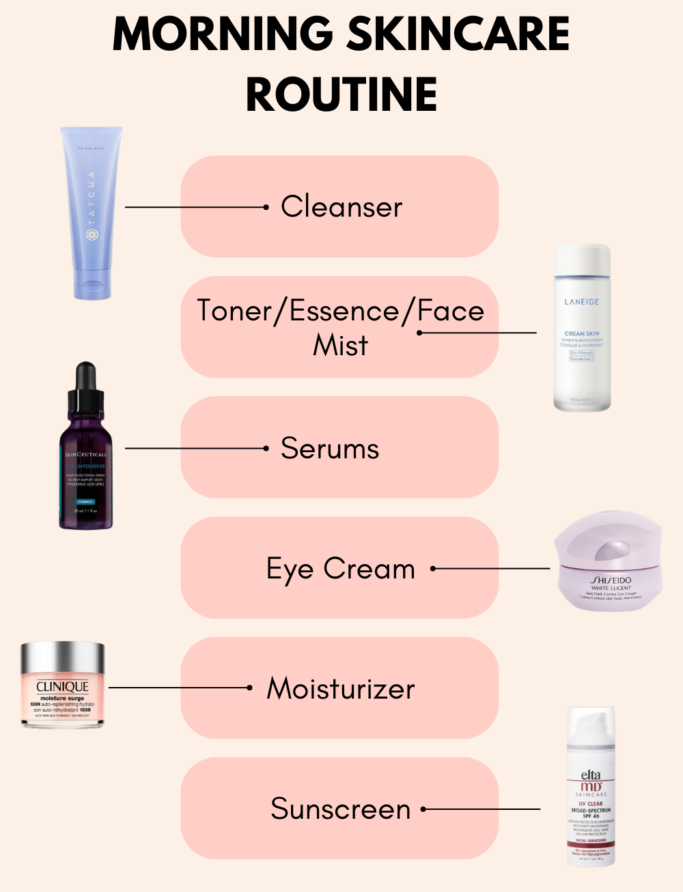
1. Cleanser: Start with a Fresh Canvas
- Purpose: Removes overnight impurities, excess oil, and any remnants of skincare products applied the night before.
- Product Choice: opt for a gentle, non-stripping cleanser. This type of cleanser effectively cleans your skin without removing essential moisture, ensuring your skin feels fresh but not tight or dry.
2. Toner: Balance and Prep Your Skin
- Purpose: Refreshes your skin and prepares it for the next steps in your routine. A toner helps to balance your skin’s pH, removing any residual impurities left after cleansing.
- Product Choice:
- For oily skin, choose a mattifying toner to control shine throughout the day.
- For dry or sensitive skin, select a hydrating or soothing toner to calm and replenish moisture.
3. Moisturizer: Hydrate and Protect
- Purpose: Provides essential hydration and creates a barrier that protects your skin from environmental factors like pollution and UV rays.
- Product Choice: Use a lightweight moisturizer that includes SPF. This multitasking product hydrates your skin while also offering sun protection, which is critical for preventing premature aging and sun damage.
4. Sunscreen: Your Shield Against UV Damage
- Purpose: Sunscreen is crucial for protecting your skin from harmful UV rays, which can cause sunburn, premature aging, and increase the risk of skin cancer.
- Product Choice: Choose a broad-spectrum sunscreen with at least SPF 30. Regardless of the weather, applying sunscreen should be a non-negotiable step in your morning routine.
Evening Skincare Routine: Cleanse and Repair for Overnight Rejuvenation
Your evening skincare routine is all about cleansing and repairing your skin after a long day. This routine allows your skin to recover and rejuvenate while you sleep, ensuring it stays healthy and vibrant.
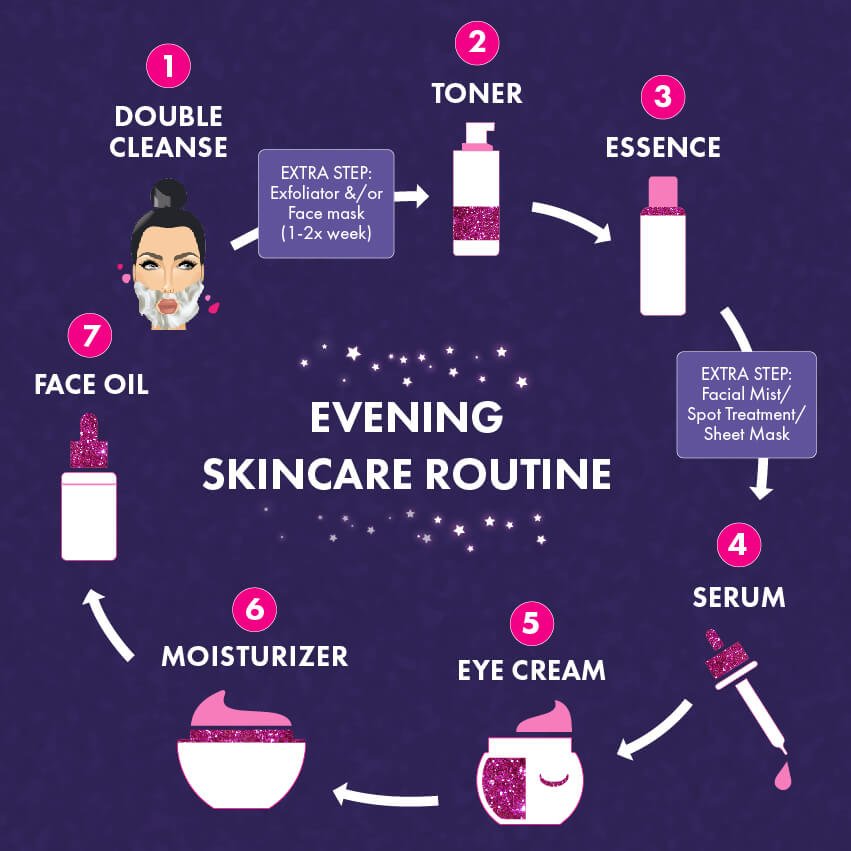
1. Cleanser: Thoroughly Cleanse Your Skin
- Purpose: Removes makeup, dirt, and impurities accumulated throughout the day, ensuring your skin is clean and ready to absorb nighttime treatments.
- Product Choice: Start with an oil-based cleanser to break down makeup and sunscreen, followed by a foaming cleanser to remove any remaining impurities. This double cleanse ensures that all traces of the day are effectively removed.
2. Toner: Balance and Prepare for Treatment
- Purpose: Restores your skin’s pH balance and prepares it for deeper treatments like serums or night creams.
- Product Choice: Choose an evening toner that targets specific skin concerns. For example, a toner with exfoliating acids like glycolic or salicylic acid can help with texture and clarity.
3. Moisturizer: Deep Hydration and Repair
- Purpose: Provides intense hydration and supports your skin’s natural repair processes overnight. Nighttime is when your skin naturally regenerates, and a good moisturizer can enhance this process.
- Product Choice: opt for a richer, more emollient moisturizer or a night cream that nourishes and repairs the skin while you sleep.
4. Treatment Products (Optional): Target Specific Skin Concerns
- Purpose: The evening is the ideal time to apply serums or treatments that address specific skin concerns, such as retinol for anti-aging, salicylic acid for acne, or hydrating serums for dryness.
- Product Choice: Tailor your evening treatments to your skin’s needs. Introduce one treatment at a time to avoid overloading your skin, and adjust based on how your skin responds.
Conclusion: Mastering Your Skincare Routine
Building an effective skincare routine doesn’t have to be complicated. By understanding the differences between morning and evening routines, you can tailor your skincare regimen to meet your specific needs.
Morning Routine:
- Focuses on protection and preparation for the day.
- Prioritizes cleansing, hydration, and sun protection to keep your skin healthy and resilient.
Evening Routine:
- Aims to cleanse and repair your skin from the day’s stress.
- Utilizes rich moisturizers and targeted treatments to rejuvenate your skin overnight.
Whether you’re just starting or refining your skincare habits, consistency is key. Regularly following these routines will help you achieve and maintain glowing, healthy skin. For personalized advice or specialized skincare products, explore more on our Derma Advance website, where you’ll find expert tips and recommendations tailored to your unique skin needs.
